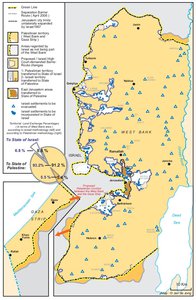PROTOCOL CONCERNING SAFE PASSAGE BETWEEN THE WEST BANK AND THE GAZA STRIP, 5 OCTOBER 1999
Map Details
The need for a “safe passage for persons and transportation between the Gaza Strip and Jericho area” was laid down as early as the 1993 Declaration of Principles (Annex II, Article 3.7). It was meant to provide for and guarantee the “territorial continuity” stipulated in all the Oslo Accords. The route of the ‘safe passage’ and its operational modalities were negotiated and agreed upon in the Gaza-Jericho Agreement of 1994 (Annex I, Article 91), to guarantee the Palestinians unimpeded freedom of movement between the West Bank and the Gaza Strip. Prior to the consent of the Israeli side on safe passage, near total restriction of movement of Palestinian residents between the two Palestinian-ruled areas formed a considerable barrier to the development of the Palestinian economy, particularly with regard to domestic trade. Also, many Palestinian families were torn apart for long periods of time as it was hardly possible for Palestinians to obtain Israeli travel permits allowing movement between the two entities. Article X of Annex I to the Israeli-Palestinian Interim Agreement on the West Bank and the Gaza Strip of 28 September 1995 (the "Oslo II Agreement") outlined the details for the 'safe passage', which was to be open for “persons and transportation during daylight hours (from sunrise to sunset) or as otherwise agreed by the JSC, but in any event not less than 10 hours a day.” Designated crossing points in Gaza were Erez (for persons and vehicles) and Karni (goods only), and in the West Bank Tarkumiya and Mevo Horon. Travelers had to carry Israeli-issued 'safe passage' cards (drivers additionally a vehicle 'safe passage' permit), whereby Palestinians with permits to enter Israel were able to use those as 'safe passage' cards. People that were denied entry into Israel or that did not have prior permits, could use the 'safe passage' by means of shuttle buses that operated 7 hours a day, for two days a week and were escorted by the Israel Police. Persons using the 'safe passage' through Israel were subject to Israeli law, and Israel reserved the right to halt the operation of the passage or modify its arrangements for security or safety reasons. While Israeli representatives initially agreed that the 'safe passage' routes would be opened in 1995 following the conclusion of the Oslo II Agreement, Israel actually refused to open them until the autumn of 1999. It was the Sharm Esh-Sheikh Agreement signed in Egypt in September 1999 by Israeli Prime Minister Ehud Barak and PA President Yasser Arafat that eventually paved the way for the negotiations on finalizing transit procedures. Several rounds of talks surrounding security issues followed and further delayed the opening of the passage which had been scheduled for 1 October 1999. PA President Yasser Arafat finally accepted the terms of a compromise agreement on the southern route (Prime Minister Ehud Barak had approved it earlier), according to which Palestinians would apply via the PA Civil Affairs Ministry which would then pass on the list of travelers to Israel for "approval". If approval was given, the Palestinians would "receive their passes from an Israeli office 'in the presence of a plainclothes Palestinian police officer.'" Israel pledged not to use the passage as a ‘trap’ to arrest travelling Palestinians, but it was obvious that Israel would not uphold the 1995 Oslo II clause stating that Palestinian would be able to travel through the 'safe passage' "without interference from Israeli authorities." Consequently, many observers at the time complained that under these arrangements, the Palestinians were not actually granted the “right” to move freely within their own country, for starters because sovereignty and security over the passage remained with Israel, whose politicians had already begun to discuss alternative routes which would better suit Israel’s goal of "separation" from the Palestinians. The “Protocol Concerning Safe Passage between the West Bank and the Gaza Strip“ was eventually signed on 5 October 1999 by Palestinian Civil Affairs Minister Jamil Tarifi on behalf of the PLO, and Israeli Public Security Minister, Shlomo Ben Ami on behalf of Israel. However, disagreements over how to operate the land link and where in the Gaza Strip to locate a joint office further delayed its opening until 18 October, when the passage from Erez checkpoint to Tarkumiya near Hebron finally opened. The northern route was supposed to become operational by January 2000 pending agreement of both sides on its exit point in the West Bank. However, the protocol was never implemented in full and the ‘safe passage’ between Gaza and Hebron operated for less than a year until it was closed on 8 October 2000. During the later talks at Camp David (2000) and Taba (2001) the ‘safe passage’ was presented as compensation for the Palestinians for not receiving 100% of the West Bank territory. According to the suggestions of then US President Clinton, the Palestinians were supposed to receive 95%-99% of the West Bank and the Gaza Strip plus the ‘safe passage’. The 2003 Geneva Initiative proposed that the Palestinians receive territory equivalent to 100% of the West Bank and Gaza as well as a ‘safe passage’ to Gaza. In the November 2005 Agreement on Movement and Access, the PA and Israel agreed once more to re-establish a 'safe passage' but the agreement was never implemented. As of 2014, the commitments under the Oslo agreements, as well as various subsequent rounds of talks, to open of a northern and a southern ‘safe passage’ route for Palestinians have not been met.
Related Maps
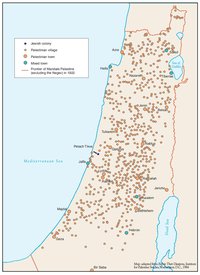
OTTOMAN PALESTINE, 1878
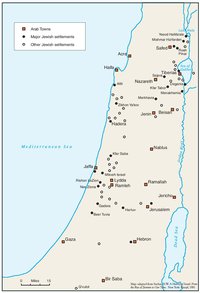
ARAB TOWNS AND JEWISH SETTLEMENTS IN PALESTINE, 1881-1914
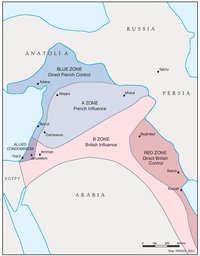
THE SYKES-PICOT AGREEMENT, 1916
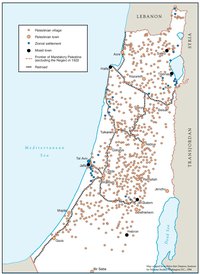
THE BEGINNING OF THE BRITISH MANDATE, 1920
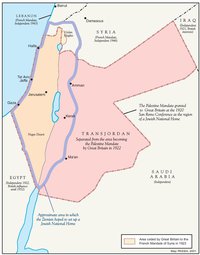
PALESTINE UNDER THE BRITISH MANDATE
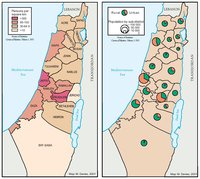
THE DEMOGRAPHY OF PALESTINE, 1931
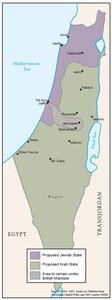
THE PEEL COMMISSION PARTITION PROPOSAL, 1937
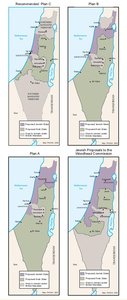
THE WOODHEAD COMMISSION PARTITION PROPOSALS, 1938
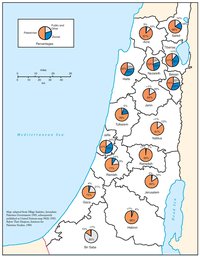
PALESTINIAN AND ZIONIST LANDOWNERSHIP BY SUB-DISTRICT, 1945
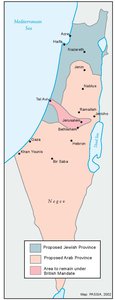
THE MORRISON-GRADY PARTITIONED TRUSTEESHIP PLAN, 1946
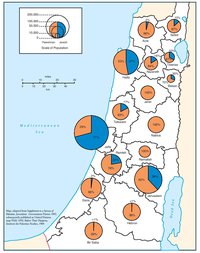
POPULATION OF PALESTINE BY SUB-DISTRICT, 1946
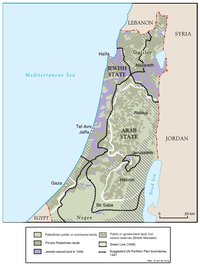
LAND OWNERSHIP IN PALESTINE, 1948
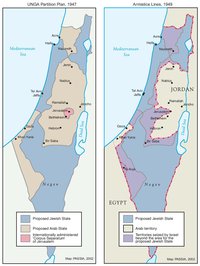
THE UNGA PARTITION PLAN, 1947 – THE 1948 WAR & THE 1949 ARMISTICE LINES
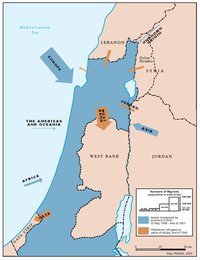
POPULATION MOVEMENTS, 1948-1951
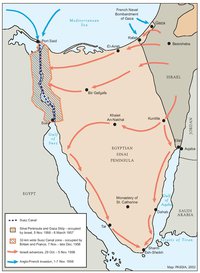
THE SUEZ WAR, 1956
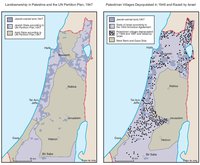
LAND OWNERSHIP IN PALESTINE AND THE UN PARTITION PLAN - PALESTINIAN DEPOPULATED AND DESTROYED VILLAGES, 1948-1949
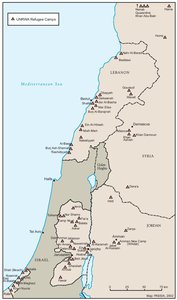
THE PALESTINIAN DIASPORA, 1958
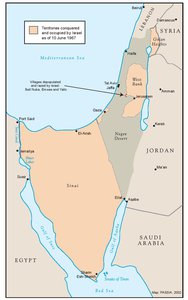
THE NEAR EAST AFTER THE JUNE 1967 WAR
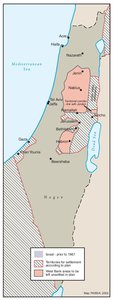
THE ALLON PLAN, JUNE 1967
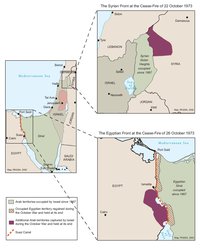
THE OCTOBER WAR, 1973
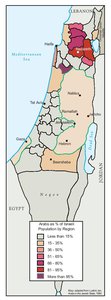
THE PALESTINIANS INSIDE ISRAEL, 1977
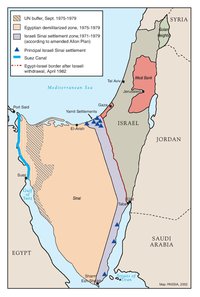
THE CAMP DAVID ACCORDS, 1978-1979
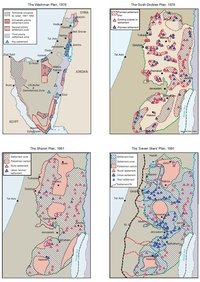
ISRAELI SETTLEMENT MASTER PLANS, 1976-1991
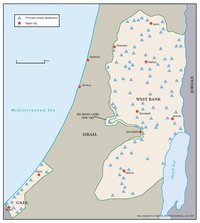
THE 1991 MADRID PEACE CONFERENCE & ISRAELI SETTLEMENTS
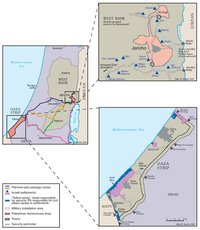
GAZA-JERICHO (OSLO I) AGREEMENT, CAIRO, 4 MAY 1994
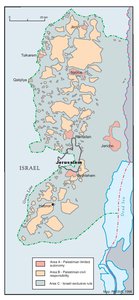
INTERIM (OSLO II) AGREEMENT, TABA, 28 SEPTEMBER 1995
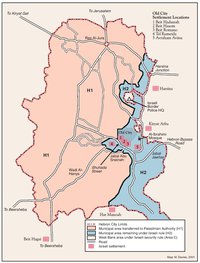
HEBRON PROTOCOL, 15 JANUARY 1997
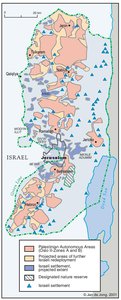
WYE RIVER MEMORANDUM, 23 OCTOBER 1998
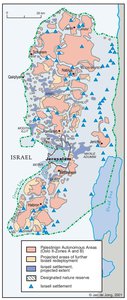
SHARM ESH-SHEIKH AGREEMENT, 4 SEPTEMBER 1999
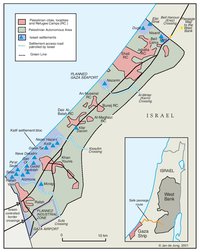
GAZA, 2000
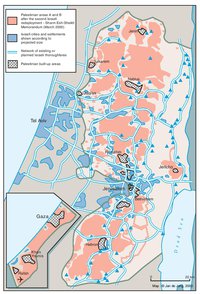
WEST BANK AND GAZA STRIP, MARCH 2000
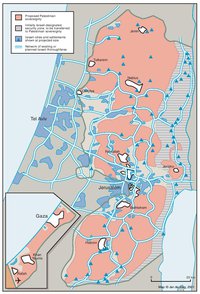
CAMP DAVID PROJECTION, JULY 2000
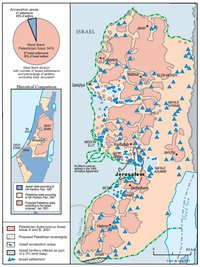
TABA TALKS PROJECTION, JANUARY 2001
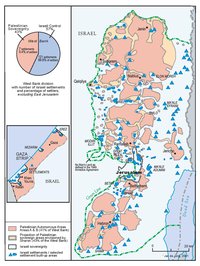
THE SHARON PROPOSAL, SPRING 2001
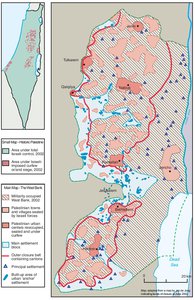
THE REINVASION OF THE PALESTINIAN TERRITORIES, 2001-2002
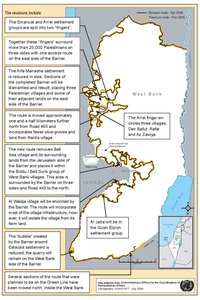
THE ROAD MAP, 2003
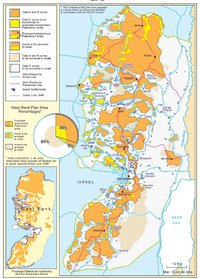
THE GENEVA INITIATIVE AND ACCORD, 2003
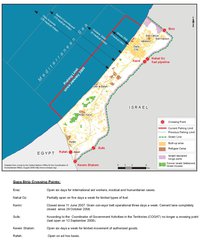
THE ISRAELI DISENGAGEMENT PLAN, 2003-2005
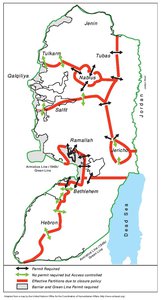
AGREED DOCUMENTS ON MOVEMENT AND ACCESS FROM AND TO GAZA, 2005
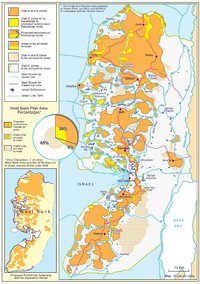
THE SETTLERS' PLAN FOR PALESTINIAN AUTONOMY, 2006
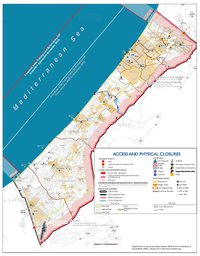
THE GAZA STRIP TODAY (2014)
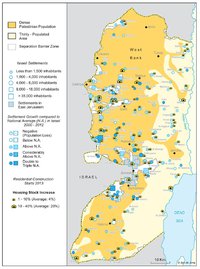
THE WEST BANK TODAY (2014)
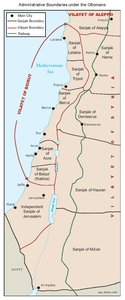
ADMINISTRATIVE BOUNDARIES
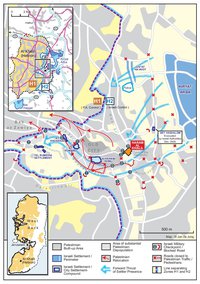
HEBRON
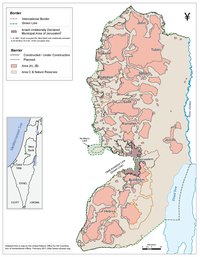
Area C
